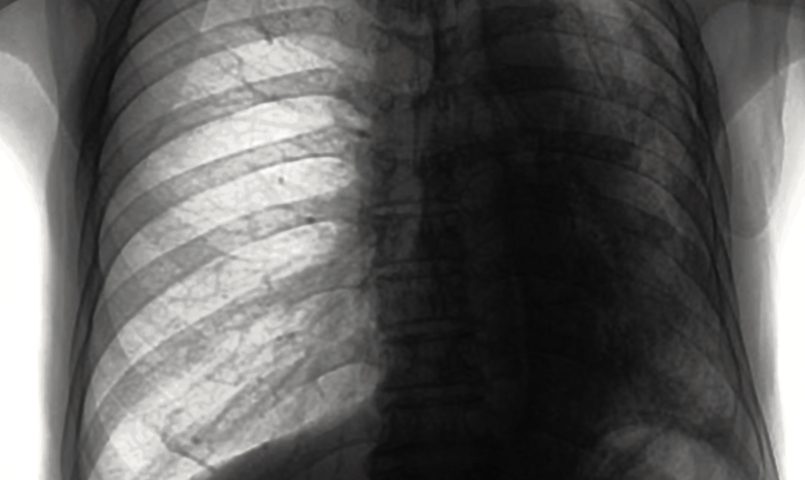A benign computed tomography (CT) scan report may not always mean patients are clear of a pleural malignancy. A new study has found that this is actually the case for nearly half of patients with a pleural malignancy, suggesting that physicians should pursue more invasive methods to be sure of their diagnosis.
Pleural malignancy is when cancer is located in the pleural cavity, the space between the lung and the chest wall. This can create an accumulation of fluid, or effusion, that can compromise the lung’s function.
The study, “The Diagnostic Performance Of Routinely Acquired And Reported Computed Tomography Imaging In Patients Presenting With Suspected Pleural Malignancy,” was published in the journal Lung Cancer.
The key radiological method used in the diagnosis of pleural malignancy is contrast-enhanced computed tomography (CT) scan, but the interpretation of the scan by the referring clinician and the reporting radiologist frequently guides patients toward other diagnostic methods to confirm their condition. Previous studies have shown that this method may not be as sensitive and specific as originally thought.
To assess whether CT scans are a reliable tool for diagnosing pleural malignancy, researchers reviewed CT scans that had been routinely acquired for 345 patients included in the DIAPHRAGM study (ISRCTN10079972), a study of mesothelioma biomarkers that recruited patients suspected of having a pleural malignancy, from January 2014 to April 2016.
CT reports containing terms such as “probable malignant effusion,” “disseminated malignancy,” or “suspicious of malignancy” were considered malignant, whereas reports with “indeterminate,” “no cause identified,” “no evidence of malignancy,” or “appearances not obviously malignant” were deemed benign.
Ten percent of the scans were CTPAs (image acquisition in the pulmonary arterial system); the remaining scans were venous phase imaging.
Scans were classified as malignant in 43.5 percent of the patients and benign in 56.5 percent. Also, 77 radiologists were involved in reporting, but only 17 were specialized thoracic radiologists.
The analysis revealed that the sensitivity of CTPA was significantly lower than CT in the venous phase of contrast (27% vs. 61%), and so was its specificity (69% vs. 82%), although this difference was not considered significant.
Sensitivity is a measure of the percentage of patients with pleural malignancy that are identified as such, while specificity measures the percentage of individuals who don’t have the disease and are correctly identified as not having pleural malignancy.
As expected, the sensitivity of specialized thoracic radiology reporting was higher than non-specialized thoracic reporting (68% vs. 53%). Researchers found no significant difference regarding specificity between both.
The overall sensitivity and specificity of the CT scans were found to be 58% and 80%, respectively, with a negative predictive value of 54%. This means that, in 46% of cases, patients with a negative result in the CT scan actually have pleural malignancy. Between CTPA and venous phase of contrast, CTPA had a worse negative predictive value, showing that it fails more in diagnosing patients.
Together, the data demonstrated that the optimal conditions to diagnose patients with pleural malignancies were gathered when patients were assessed using venous-phase contrast enhancement and had subsequent thoracic reporting. In this case, the sensitivity and specificity of the method were 69% and 73%, respectively.
Nonetheless, the researchers emphasize that CT scans are not sufficient to exclude or confirm the presence of pleural malignancy and that patients should be further assessed with more invasive methods, if the presence of pleural malignancy alters their management.


